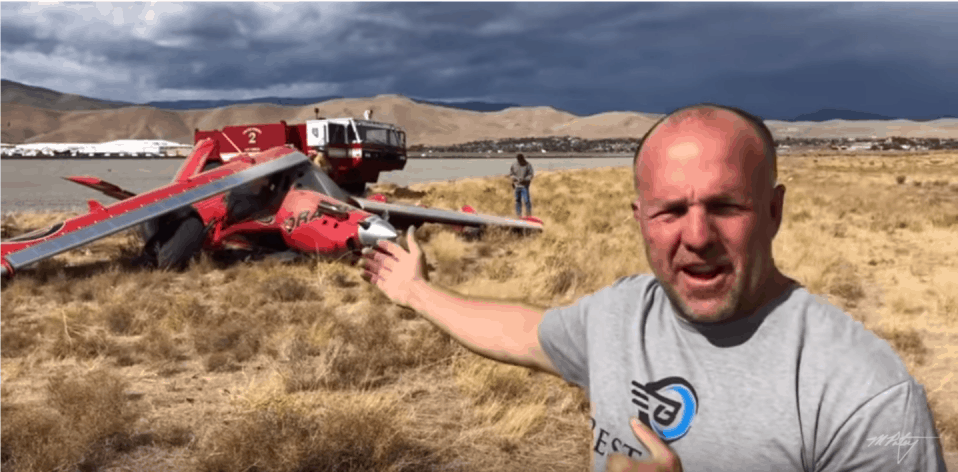What Pilots Can Learn From The Draco Crash
Yesterday, the famed custom Wilga bush plane built by Mike Patey, crashed on takeoff from Reno-Stead airport. Fortunately, all on board were unhurt but the highly customized turbine-powered bush plane didn’t fare so well. The plane appears to be a total loss but on the positive side, there are a few things that pilots can learn from the Draco crash.
Draco Crash
First, let’s review what occurred yesterday.
As Mr. Patey attempted to takeoff from Reno-Stead Airport, a severe crosswind picked up the left wing of Draco. Patey applied full aileron and rudder inputs but a gust caught the aircraft and blew it “like a kite” to the right. This resulted in the right wing catching the ground and the STOL competition-winning airplane cartwheeling off the runway. (See the video below.)
Ultimately, Mr. Patey took full responsibility for the decision to continue the takeoff after multiple warning signs.
Aircraft and Pilot Limitations
The most important lesson from the Draco crash is don’t fly beyond the limits of the airplane or yourself. Mr. Patey specifically discussed this throughout the video taken right after the accident. In it, he took responsibility repeatedly for continuing with the flight, despite the unfavorable conditions.
Every aircraft has limits. So does every pilot. It’s important to know what your personal limitations are, as well as the limitations of your airplane.
Patey noted that there were multiple warning signs prior to takeoff that should have made him rethink the decision to continue. The first was the fact that he had difficulty taxiing to the runway. This was the first warning sign.
Lesson #1 – If the crosswinds make taxiing difficult, taking off won’t be any easier.
Upset Controllers
Next, he noted that he felt compelled to line up on the runway in such a way to “crab” into the crosswind as much as possible. Even though he thought that turning 90 degrees for takeoff would be better, he didn’t pursue it as he didn’t want to “get the tower mad”.
Lesson #2 – Never be afraid to upset the controllers if the winds are above your personal comfort zone. Use a different runway (or even a taxiway) if that’s what you need to maintain the safety of the flight. Or, turn around and postpone the flight if the takeoff can’t be made safely.
You Don’t Have To Take Off
Once lined up on the runway, Patey noted that the crosswind was so strong that it was compressing the suspension on the right side of the plane. This is a huge red flag. When the wind is causing the aircraft to roll to one side while it’s stationary, it will likely be worse once the plane starts moving.
Lesson #3 – If you don’t like the conditions once you’re lined up on the runway, abort the takeoff. There’s no rule that says that you have to go once you’re on the runway. If you don’t like it, turn around and head back to the hangar.
Lessons Learned
Again, Draco was lost but nobody was hurt, so we can all be thankful for that. In addition, we can all learn a few things from the incident. Mr. Patey’s willingness to be honest and upfront about the cause may very likely save lives. As such, he’s to be commended.
“Make better choices than I just did.”
Mike Patey
Read also: Aviation Safety Tips For Pilots


